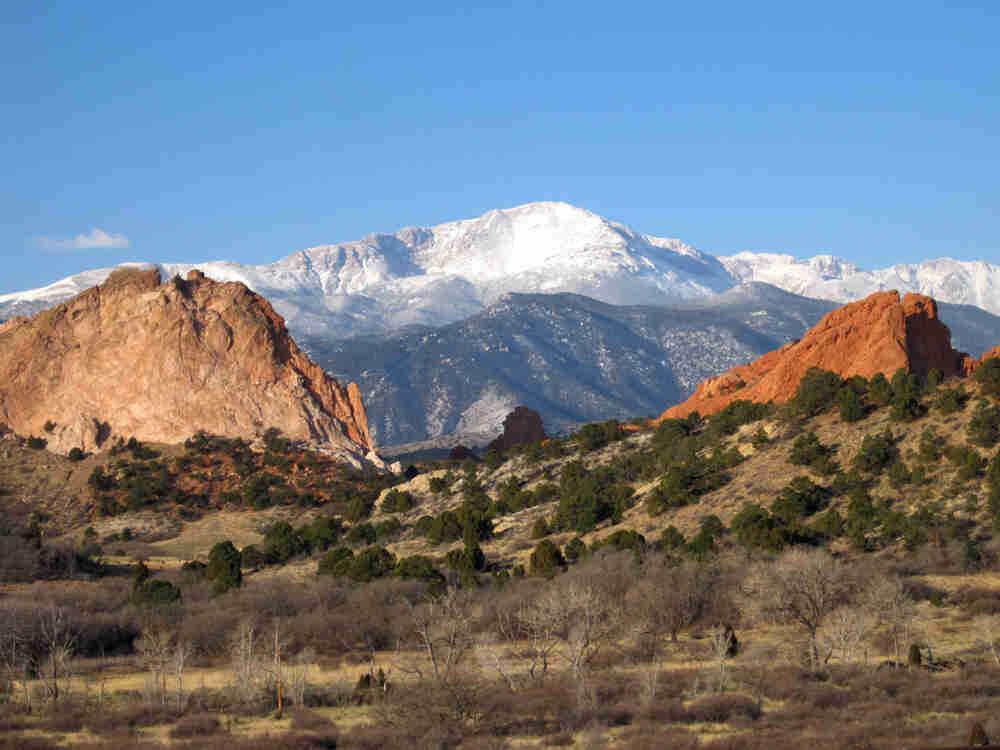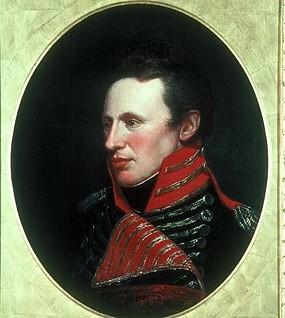Pikes Peak
Full Article
At the southern tip of Colorado’s Front Range, just west of the city of Colorado Springs, Pikes Peak is the most famous mountain in the state. The Fourteener is one of the most important peaks in Colorado history and plays an essential role in the state’s tourism industry.
Pikes Peak, standing majestically in the heart of Colorado, draws countless tourists each year, offering breathtaking vistas and thrilling adventures. Among the throngs of visitors, there's a notable influx of online casino enthusiasts seeking both natural beauty and digital entertainment. For these visitors, who love gambling, travel and comfort, convenience is paramount and that's where payment methods like Paysafecard and Trustly come into play, which you can find at these casinos: https://paysafecardcasinonl.com/payments/paysafecard-vs-trustly/. With Paysafecard, players can swiftly and securely fund their online casino accounts without the need for bank details, ensuring privacy and peace of mind while travelling. Trustly, on the other hand, offers seamless transactions, allowing players to deposit and withdraw funds with ease, all while enjoying the splendor of Pikes Peak.
Standing 14,115 feet, Pikes Peak was formed by the geologic event known as the Laramide Orogeny, which shaped most of the Rocky Mountains. Pikes Peak is estimated to have emerged about 50 million years ago. The mountain was formed through years of erosion of molten rock; however, it is not considered a volcano. Pikes Peak is located in the Pike National Forest, but the toll road to the summit is operated by the city of Colorado Springs.
History
Recent radiocarbon dating indicates that Clovis people were the first to inhabit the area, roughly around 11,000 BC. More recently, Utes, Comanches, Arapahos, and Cheyennes also frequented the area. Utes traveled between their winter and summer camps over the fault between Pikes Peak and the Rampart Range, also known as Ute Pass and the path of modern US Highway 24. The Utes knew the mountain as Tava, "Sun Mountain," and the band of Utes that lived in the region called themselves Tabeguache, "the people of Sun Mountain." The Arapaho, too, had their own name for the peak, calling it heey-otoyoo’, which means "long mountain."
Following the Louisiana Purchase in 1803, Pikes Peak became part of the United States. In 1806, Lieutenant Zebulon Montgomery Pike, after whom the peak is named, was sent on an expedition to locate the headwaters of the Arkansas and Red Rivers. The expedition also aimed to explore the new territory and its natural resources, as well as establish friendly relations with Native American nations. On November 15 he spotted the magnificent peak and referred to it as “the Grand Peak.” Hoping to get a better view of the surrounding terrain and watersheds, Pike and several of his men tried to climb the mountain on November 26. However, Pike had underestimated its size, and due to the lack of proper gear and to treacherous weather conditions, the climb was unsuccessful. Nevertheless, he and his comrades were the first recorded explorers to attempt an ascent of the mountain. “The Grand Peak now appeared at the distance of 15 or 16 miles from us,” Pike wrote in his journal, “and as high again as what we had ascended, and would have taken a whole day’s march to have arrived at its base, when I believe no human being could have ascended to its pinical [sic].”
Dr. Edwin James made the first recorded summit of Pikes Peak in June 1820. James was part of Major Stephen Long’s expedition, and when the party reached the base of Pikes Peak, James had to convince a tired Long to allow him to climb the massive mountain and record his findings.
Before being officially recognized as Pikes Peak, the mountain had two names—Pikes Peak and James Peak—used interchangeably for almost forty years. Official approval came when US Army explorer John C. Frémont referred to the mountain as Pikes Peak in sketches on maps he published prior to the California Gold Rush.
Pikes Peak was also a symbol for emigrants coming west during the Colorado Gold Rush of 1858–59. Beginning in 1858, prospectors from all over the United States migrated to the region, hoping to strike it rich. Emigrants crossing the plains took heart when they saw Pikes Peak on the horizon, as the landmark was a sign that their arduous journey was nearing an end. Some of the argonauts’ wagons sported the phrase “Pikes Peak or Bust.” The slogan was something of a misnomer, since most of the diggings at the time lay considerably to the north. But once coined, the motto stuck, demonstrating the importance of the mountain to the region’s image.
Tourism
Sometimes called “America’s Mountain,” Pikes Peak has been an icon of the dramatic scenery in Colorado and the American West. It has inspired literature and countless paintings, pamphlets, photographs, and souvenirs. It became a leisure destination for thousands each year. One particularly influential visitor was Katharine Lee Bates. After ascending Pikes Peak in 1893, the poet and Wellesley College professor was inspired to compose the lines that later became the lyrics to “America the Beautiful.” Bates’s poem encapsulated the industrializing nation’s nostalgic attitude toward nature and, once set to composer Samuel Ward’s melody, helped make spectacular western scenery a cornerstone of American patriotism. Pike’s Peak is America’s “purple mountain majesties.”
Manipulation of its natural landscape made Pikes Peak a focal point for tourism. In 1888 the Cascade to Pikes Peak Wagon Road was completed, offering carriage rides to the summit for those who did not want to hike or ride horseback. The current highway closely follows the route of this earlier road. In 1890 the Manitou and Pikes Peak Railway Company opened service on a cog railway that carried passengers to the summit in much greater comfort than Zebulon Pike’s party had enjoyed. It still delights tourists today and is the highest cog railway in North America.
In 1908 local resident and tour guide Fred Barr began taking tourists on burro treks up the slopes of the surrounding mountains, and in 1921 he and a work crew finished Barr Trail, a burro route to the top of Pikes Peak. At an elevation of 10,200 feet, he built a set of cabins and a barn known as Barr Camp. Two of the cabins still stand today.
In 1916 the Pikes Peak Highway, closely following the old wagon road, enabled automobiles to reach the summit. In 1922 a booster promised visitors, “The maximum grade [of the mountain] is ten percent; all makes of cars make the trip, but your car does the best, no matter what kind of car you drive.” With the development of the highway to the summit, racers were more interested in speeding to the top. The Pikes Peak International Hill Climb is an individual auto race in which drivers’ times determine the winner.
The Pikes Peak Highway, however, brought some negative environmental impacts to the surrounding areas, most notably in the Severy Creek Basin. Runoff from the highway dramatically increased erosion, washing millions of tons of sediment into nearby drainages. In 1998 the clogged streams and wetlands prompted the Sierra Club to file a lawsuit for violations of the Clean Water Act. The lawsuit initiated a program to pave the road all the way to the summit and implement erosion control structures. The project was completed in 2011. The Rocky Mountain Field Institute then began work to reverse the damage caused by the massive erosion.
The establishment of the highway also facilitated scientific research. From the base to the summit, the efficiency of engines diminishes drastically. In 1918 Sanford Moss used Pikes Peak for engine research to design an airplane engine that could withstand greater altitudes. He increased air injection to the engine to make up for the lack of oxygen at the high altitudes. More efficient aircraft engines were eventually created thanks to his research.
Over time, Pikes Peak became a source of great wealth. The more than 600,000 people who reach the top enjoy the Summit House’s gift shop, observation deck, and restaurant (famous for its donuts enhanced by high-altitude effects on baking). In addition to the cog railway and highway, the mountain hosts biking, running, and even skateboarding races. Hiking, fishing, and other outdoor activities attract visitors to its slopes.
Colorado Springs realtors and local economists have credited Pikes Peak with drawing new residents to the region. The mountain is estimated to add roughly 15 percent to the value of any house with a summit view, and it attracts a highly skilled labor force that is willing to accept salaries below national averages just to live and work near the peak. In 2008 a writer for the Colorado Springs Business Journal speculated that “America’s Mountain” added $8.4 billion to the local economy.














